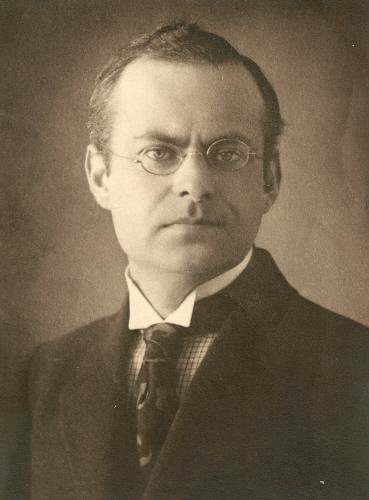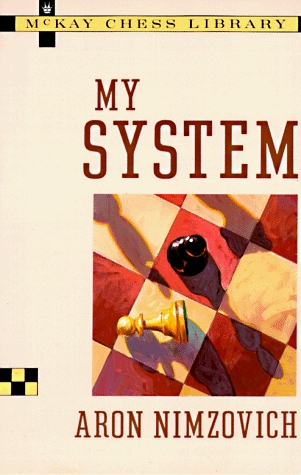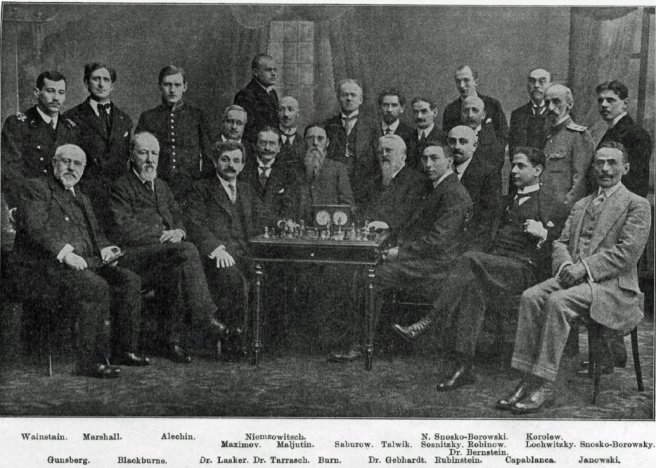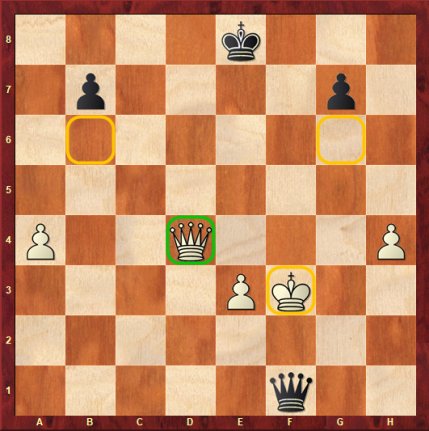


Anyone who explains things to other people should be interested in being understood. The intellectual and linguistic clarity of the teacher helps the student. A text full of technical terms and digressions misses the point.

Aron Nimzowitsch (ca 1916)
Photo: Unknown via Per Skjoldager (reproduced with permission)
Lund Chess Academy sells antiquarian chess books (including works on Nimzowitsch)
Clarity was not the concern of Aron Nimzowitsch. If the master wrote about chess, a flood of newly coined technical terms poured over the reader. Moreover, the author's eccentricity always had to shine through, so that nobody would confuse him with Siegbert Tarrasch, God forbid. Here a flourish, there a pirouette; Nimzowitsch had no lack of ideas for intellectual excursions. But instead of getting to the point, he indulged in them.
Nimzowitsch, on the importance of the seventh rank, writes as follows:
Chapter 2.4 (The open file — Possible obstacles to operations down a file)
"We have seen how important the free access we have won to the 7th and 8th ranks can become. This being the case, it seems likely that nature herself, so to say, may have done something to protect this sensitive spot, just as good-hearted and wise old Mother Nature has put man's heart in a well protected spot behind his ribs. (This place is so well protected and the heart so deeply hidden that in the case of many people one might well think...[SIC] that they were born without one.) Just to reassure the more sensitive among my readers, let me point out straight away that heartlessness is not a serious disease, since it causes little pain to those affected."
Mother Nature? Heartlessness?
WTF, Aron?
Chesswise, My System is a milestone, but as a book, it does not fully succeed because Nimzowitsch was driven by the desire to write about his genius.

The debate about My System is still raging today which is a sign for its lasting influence but also indicates that it does not completely succeed as a chess book. Which is a pity, actually. Because the substance of the book — the concepts which Nimzowitsch was the first to formulate — was revolutionary in the middle of the 1920s and is in large parts still valid today.
For slightly advanced players, Nimzowitsch provides a foundation on which they can build an understanding of strategy and positional play. Those who progress further and maybe even take the road to chess mastery will read their Nimzowitsch again and will find a number of propositions and concepts, which they did not fully understand at the first reading. For example, the passage about doubled pawns which are often "statically strong" and "dynamically weak". Beginners do not comprehend this, strong players nod but are astonished because they have never heard this in this clarity before. Sometimes Nimzowitsch, after all, gets to the point.
Between these pearls, Nimzowitsch digresses, again and again, to let the reader not forget how clever the author is and what clueless patzers almost of all his contemporaries are who wrote about chess at the beginning of the 20th century. Some chess players still enjoy Nimzowitsch's eccentricities to this day, they enjoy the originality and the peculiarity of his digressions, but if you buy a book in 2018 because you want to learn about the basics of chess you will easily find authors that teach these basics much better and who write only about chess and not about themselves and their brilliance.
Chess understanding has advanced in the last 100 years and some of the concepts formulated by Nimzowitsch must be described differently today and from a new perspective. We still use some of the terms he used, coined and made popular — but in a different way.
Take "centralisation" for example. When Magnus Carlsen develops his pieces and connects his rooks he will often put them on central files. Today, we usually call such manoeuvres "centralisation". And if, in pursuit of the project "winning against Mum", our little "James" plays his knight to the rim instead of establishing it in the centre, it becomes obvious that no one has ever talked about "centralisation" with him.
Nimzowitsch analyses "centralisation" only in the context of the endgame. The king, which we hide at the beginning of the game behind a wall of pawns at the edge of the board, suddenly plays an important role in this final phase of the game. After all, in view of the reduced material on the board, it is no longer threatened by mating attacks.

The arch enemies Tarrasch and Nimzowitsch masterfully centralised themselves on this picture, taken at the tournament St. Petersburg 1914. While everybody turns to the camera chess friend Nimzowitsch decided to do things in his own way and turns sideways. We don't know for certain but would bet that he did that on purpose.
The king has to be effectively placed to have an impact. In the centre of the board pieces have the biggest impact and in the endgame, the king usually heads towards the middle of the board.
With the queens it's similar. In the beginning, they better hold back to avoid being harassed — or even caught — by the minor pieces of the opponent. But when they can go to a safe and central post they should be centralised. After all, the queen is the strongest piece. In the centre she controls the whole board and that is an important, sometimes even decisive factor.
Let's again quote from My System.

The elements of endgame strategy, 1) Centralisation, point C
Unfortunately, Nimzowitsch here writes wistfully about princesses and not about chess.
"White decides to see a bit of the world, and heads off happily like the hero from a fairy tale. And finally he reaches a splendid castle in which he finds the young beautiful princess, as one does in all good fairy tales. The same happens to our [king on f3], with the difference that there are two castles which attract him: the ideal positions on b6 and g6. After many a weary mile, he finally reaches one of these squares and safety...“
The white queen is well centralised, controls a lot of squares and defends all white pawns. And the queen protects the white king when he sets out to reach the squares b6 or g6 to attack the black pawns.
Everything else is just warm words.
The original German version of this article first appeared in Conrad Schormann's blog "Perlen vom Bodensee". Republished with kind permission.
Translation from German: Johannes Fischer